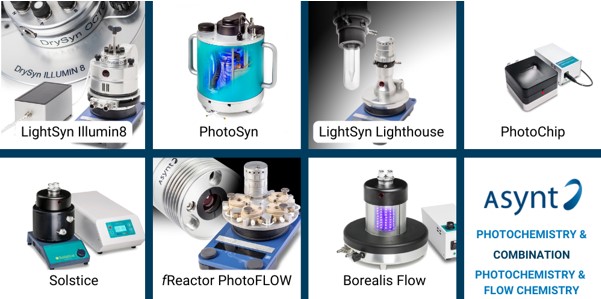Asynt introduces new tools to expand options for photochemical synthesis
Laboratory equipment manufacturer Asynt has introduced an expanded portfolio of photochemistry reactors, offering researchers enhanced capabilities for both batch and continuous flow applications. This development addresses the growing interest in photochemistry as a ‘reagentless’ activation method in synthetic chemistry.
The new range encompasses multiple scales of operation, from milligram quantities to potential kilogram-scale production, incorporating LED technology across all configurations. These light sources provide narrow emission bands between 365 nm and 940 nm, with cool white IR options available on selected models.
Safety considerations feature prominently in the design, with all reactors incorporating light sealing and interlock mechanisms. Temperature control systems manage both LED light source and reactor conditions, ensuring reaction stability and reproducibility. For batch operations, the LightSyn Lighthouse offers a 10 W LED system with single or triple position configurations, whilst the parallel processng capabilities of the LightSyn Illumin8 accommodate up to eight simultaneous reactions. The Solstice and Solstice MAXI systems provide higher power options at 120 W and 180 W respectively, with capacity for up to 12 reaction vessels.
Particularly relevant for scale-up applications, the flow chemistry options include the fReactor PhotoFLOW, featuring five continuously stirred tank reactors in cascade formation. The Photochip LED Photoreactor accommodates various GSM reactor blocks, offering reaction volumes from 0.27 mL to 20.0 mL. The PhotoSyn system provides high-power capabilities up to 700 W, with programmable control and multiple connectivity options.
The integration of photochemistry with flow chemistry systems enables continuous processing, effectively removing traditional batch volume constraints. This combination particularly benefits researchers requiring consistent production of photochemically derived compounds.
For detailed specifications and application information: https://www.asynt.com/products/photochemistry
Digital issue: Please click here for more information





